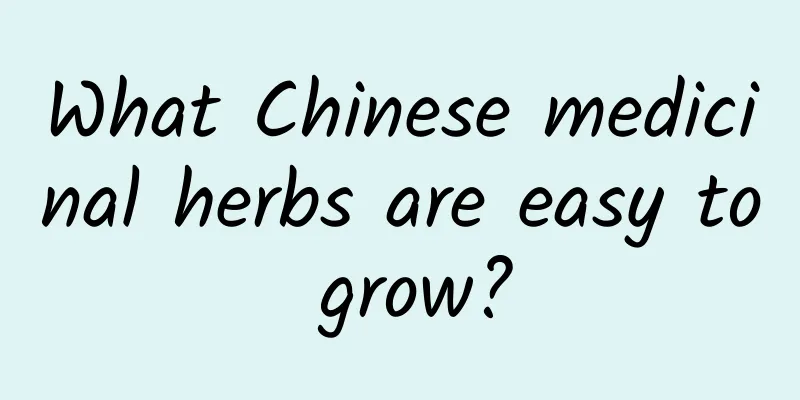What Chinese medicinal herbs are easy to grow?

|
There are many types of Chinese herbal medicines. There are more than 500 kinds of common Chinese herbal medicines sold in the Chinese medicine wholesale market. Among them, the vast majority are harvested from natural resources, and there are more than 100-200 species that are artificially cultivated. Some species are scarce in nature, but the technical research on artificial cultivation has not been improved, such as Cordyceps, which cannot be cultivated. So from these many types, which type should we choose to plant? Generally, we need to consider the following factors: 1. Local conservationists first investigate whether the species is suitable for local climatic conditions, soil types, irrigation and drainage conditions, and other special requirements of the species' habits. For example, saffron is bred from bulbs, which can only bloom if the bulbs are more than 10 grams, and generally do not bloom if they are less than 8 grams. If planted in the middle and lower reaches of the Yangtze River, large bulbs can be bred for seeds every year, and more flowers can be harvested. In the Northwest, North China and Northeast regions, due to the low temperature, open-field cultivation cannot grow normally and must be overwintered in greenhouses or protected areas. In addition, the peanut yield is extremely low, and the bulbs are getting smaller and smaller. It is necessary to purchase seeds every year, and the economic benefits are very poor. It is basically not feasible to grow saffron in North China. Korean ginseng, wild ginseng and coptis chinensis must be grown in humid areas with extremely low temperatures in winter to develop normally. Therefore, this type of species should not be introduced and planted blindly. For the specific eco-climatic requirements of each species, please refer to the "Specific Monograph" section. Green ecological standards for introduced planting species: plant local authentic Chinese medicinal materials as much as possible, which have no problems with adaptability and have planting technology and market basis; for newly introduced species, caution must be exercised. 2. Profitability of Chinese herbal medicine cultivation It is the main concern of cultivating Chinese herbal medicines. There are many factors that affect the profits from growing Chinese herbal medicines, and the key factors include: planting costs, seed sources, planting techniques, and price trends. The quality of planting technology immediately affects the production volume and quality of Chinese herbal medicines. Under the same standard, some people can produce 6000 kg per mu of Isatis Root Granules, while others can only produce more than 1500 kg. The former can generate a net income of more than 15,000 yuan per hectare, while the latter will incur a loss. This truth is very simple and will not be elaborated on here. 3. Without regional sales, there will be no economic benefits in growing Chinese herbal medicines. Therefore, before planting, you need to see whether there are marketing channels and whether they can be sold. (2) Planting costs The planting costs of Chinese herbal medicines are composed of seed and seedling fees, fertilizer fees, chemical fertilizer fees, service fees, etc. The cost of seeds and seedlings is a factor that should be carefully considered. The prices of seeds and seedlings have changed over the years. For example, Eucommia seeds were 300 yuan per kilogram in 1994 and 1995, but now they are not selling well even at a few dozen yuan. The changes in seed prices are basically parallel to those of Chinese herbal medicine prices, but slightly behind. Generally, seeds are obtained from Chinese herbal medicines. If the price of Chinese herbal medicines is very good, the price of seeds will increase rapidly. Since everyone saw that Chinese herbal medicines were profitable, they all wanted to plant them the following year, so they competed to purchase seeds. The time difference can be as short as ten to twenty days or as long as several months. Therefore, if you want to develop and plant a certain type of Chinese herbal medicine, you must purchase the source as early as possible. In some years, such as 1997, the price of fresh Yuanhu bulbs reached 20 yuan/kg, and the cost of seedlings per mu was nearly 30,000 yuan. At that time, you must be cautious if you want to plant Yuanhu, as the price of seeds and seedlings is very high, which indicates that the national planting area is very large, and the price of Chinese herbal medicine may plummet when the new crop is produced. The price of Yuanhu in 1998 was only a dozen yuan per kilogram, and the profit was not enough to cover the cost of purchasing bulbs. |
<<: TCM Syndrome Differentiation and Classification of Headache
>>: The difference between the effects of Citrus aurantium and Citrus aurantium
Recommend
Can inflammation on the liver surface be detected through ultrasound?
Liver health is very important. A little careless...
What is the best drink to drink with saffron?
It is best to drink saffron with honey, which can...
Why doesn't sulfuric acid corrode glass?
For some people, there is often such a question: ...
What are the dangers of a fetus that is one month smaller?
Many babies still in their mother's belly are...
Do I need to get an injection if my rabbit bites my hand?
As the saying goes, rabbits will bite when they a...
Blood in stool
Fresh blood in the stool is commonly known as blo...
Tearing pain in the perineum accompanied by bloodshot
Because the female vulva is completely exposed to...
Chronic Kidney Disease Stage 4?
Stage 4 chronic kidney disease is already in a re...
Cervical pain, nausea and vomiting
The occurrence of cervical spondylosis is not a p...
What causes eczema in adults?
Many of you may think that eczema only occurs in ...
White pimples in the groove of the glans
Anyone who has some knowledge of the male reprodu...
What are the symptoms of having the ring for a long time?
For women who have already given birth and do not...
Why do sweaty hands happen? How to avoid it?
Excessive sweating of hands has always been a hea...
What are the precautions for intravenous potassium supplementation?
The hot summer is here. Because the weather is ho...
How many levels are there for patients with mental disorders?
Patients with mental disorders are generally divi...









